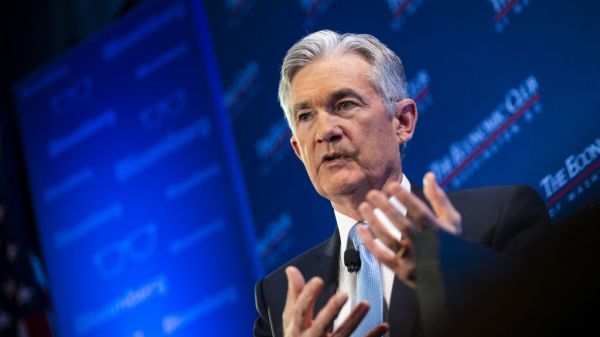
Federal Reserve officials discussed at their meeting three weeks ago ending the reduction of bonds on the central bank’s balance sheet before the end of 2019, according to minutes released Wednesday.
“Almost all participants thought that it would be desirable to announce before too long a plan to stop reducing the Federal Reserve’s asset holdings later this year. Such an announcement would provide more certainty about the process for completing the normalization of the size of the Federal Reserve’s balance sheet,” the document said.
Stocks looked for direction after the minutes as the market parsed through the meeting summary.
The minutes showed extensive discussion of market conditions, particularly on the emphasis that Fed actions were having on prices of risky assets like stocks and corporate bonds.
“Bottom line, while the Fed I believe clearly had room for the current pause because of the economic slowdown going on overseas, it should also be clear to everyone that they are mostly beholden to asset prices, both the stock market and credit spreads with that driving policy,” Peter Boockvar, chief investment officer at Bleakley Advisory Group, said in a note.
Market participants have been keyed in on the Fed’s intentions regarding rates as well as the $3.8 trillion in bonds the central bank is holding on its balance sheet. The central bank began reducing the portfolio in October 2017 by allowing a capped level of proceeds to roll off each month, and officials have tried to assure the markets that the process should go on seamlessly.
However, investors have gotten nervous that the Fed would allow the reduction to continue even if financial conditions tightened. The statement from the minutes echoes recent comments from several Fed officials that the program likely will end before the conclusion of the year as bank reserves fall to a level with which regulators and financial institutions feel comfortable.
Wiggle room for more hikes later
On a related issue, the Fed also judged that a “patient” approach to interest rate hikes would be prudent as it continued to weigh various headwinds to growth.
“Participants pointed to a variety of considerations that supported a patient approach to monetary policy at this juncture as an appropriate step in managing various risks and uncertainties in the outlook,” the minutes said.
Among the considerations were the recent softness in inflation, the government shutdown and the path of fiscal policy. Officials also weighed the impact that Fed policy tightening moves as well as the ongoing trade negotiations between the U.S. and China would have on the economy.
Members added that holding the federal funds rate in a target range of 2.25 percent to 2.5 percent “posed few risks at this point.” In the past, officials have worried that keeping rates low for too long would spur inflation and force the Fed to tighten more quickly than it would like.
However, the Fed left itself some wiggle room.
Federal Open Market Committee members noted that if the potential headwinds eased, a re-evaluation of the “patient” approach would be warranted.
“The much ballyhooed term ‘patient’ was used to buy the Fed some time to assess how risks to the economy unfold before deciding on their next move,” Greg McBride, chief financial analyst at Bankrate.com, said in a statement. “What wasn’t ballyhooed was the recognition by the Fed that if uncertainty abated, the term ‘patient’ may no longer apply. In other words, if the economy remains in good shape, we haven’t necessarily seen the last of the interest rate hikes.”
The likelihood of more rate increases, though, was tied to inflation.
Market response to Fed actions seemed to take up a good part of the conversation.
Participants noted market belief that the balance sheet reduction helped cause the late-2018 market volatility, and noted that investors interpreted communications from the December meeting as “not fully appreciating the tightening of financial conditions and the associated downside risks to the U.S. economic outlook that had emerged since the fall.”
The minutes stated that respondents to a survey of primary dealers and market participants indicated little belief that the balance sheet reduction was playing havoc with markets.
Meeting participants reiterated that they intended the balance sheet “to operate with no more securities holdings than necessary to implement monetary policy efficiently and effectively.” The key question of where the balance sheet ends up is tied to bank reserves, which are currently around $1.64 trillion. Wall Street now expects the Fed to allow about $500 billion more of securities to roll off before the balance sheet reduction is halted.
